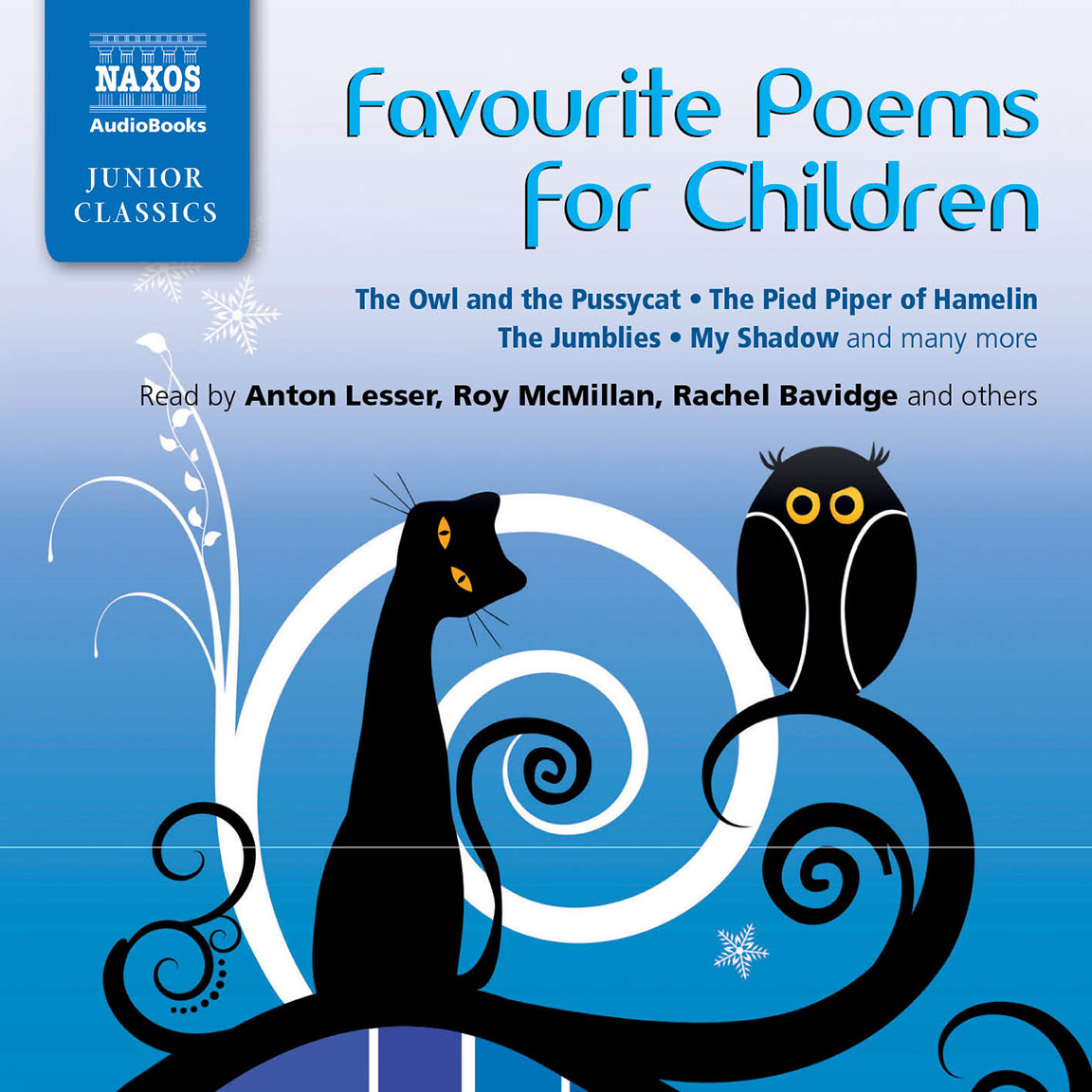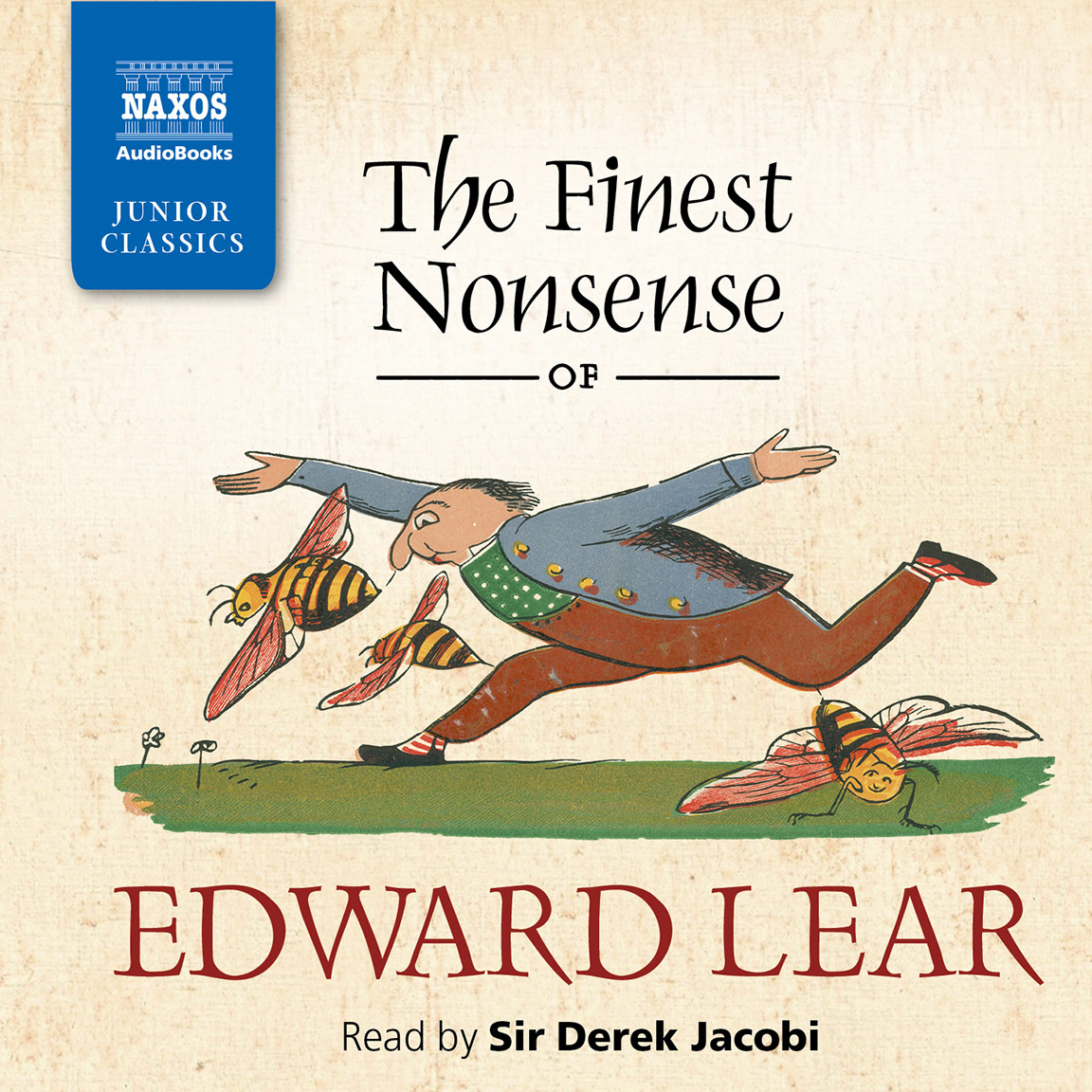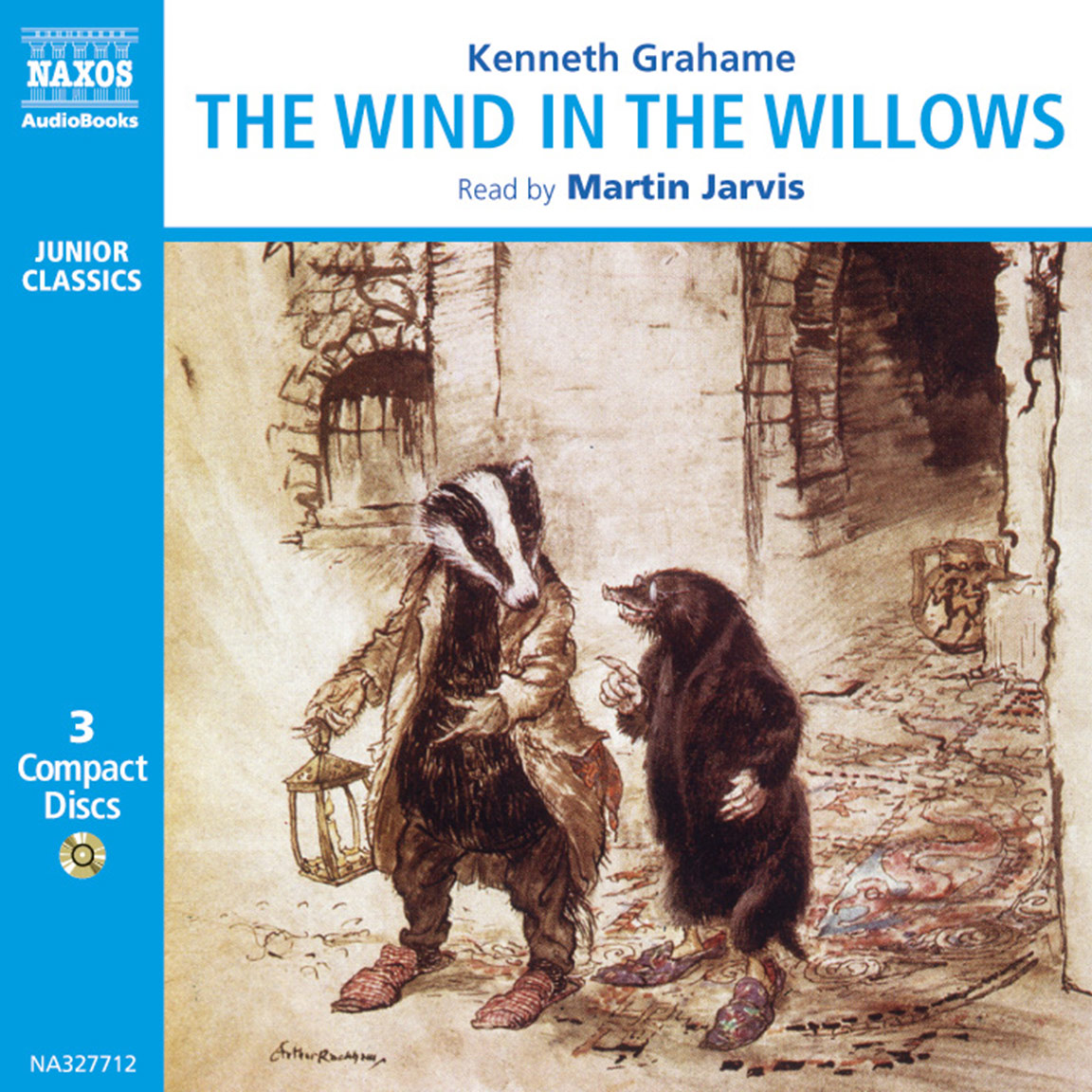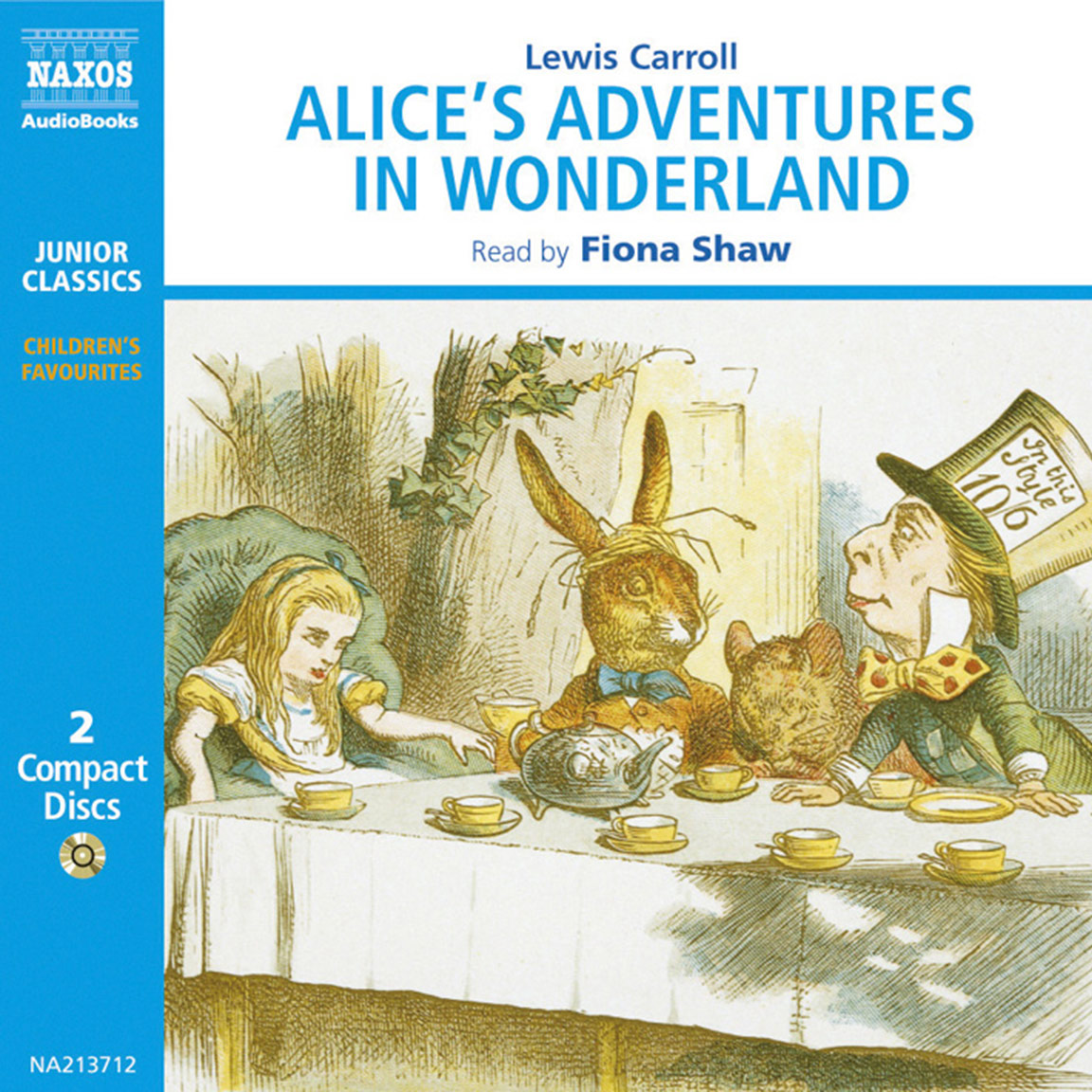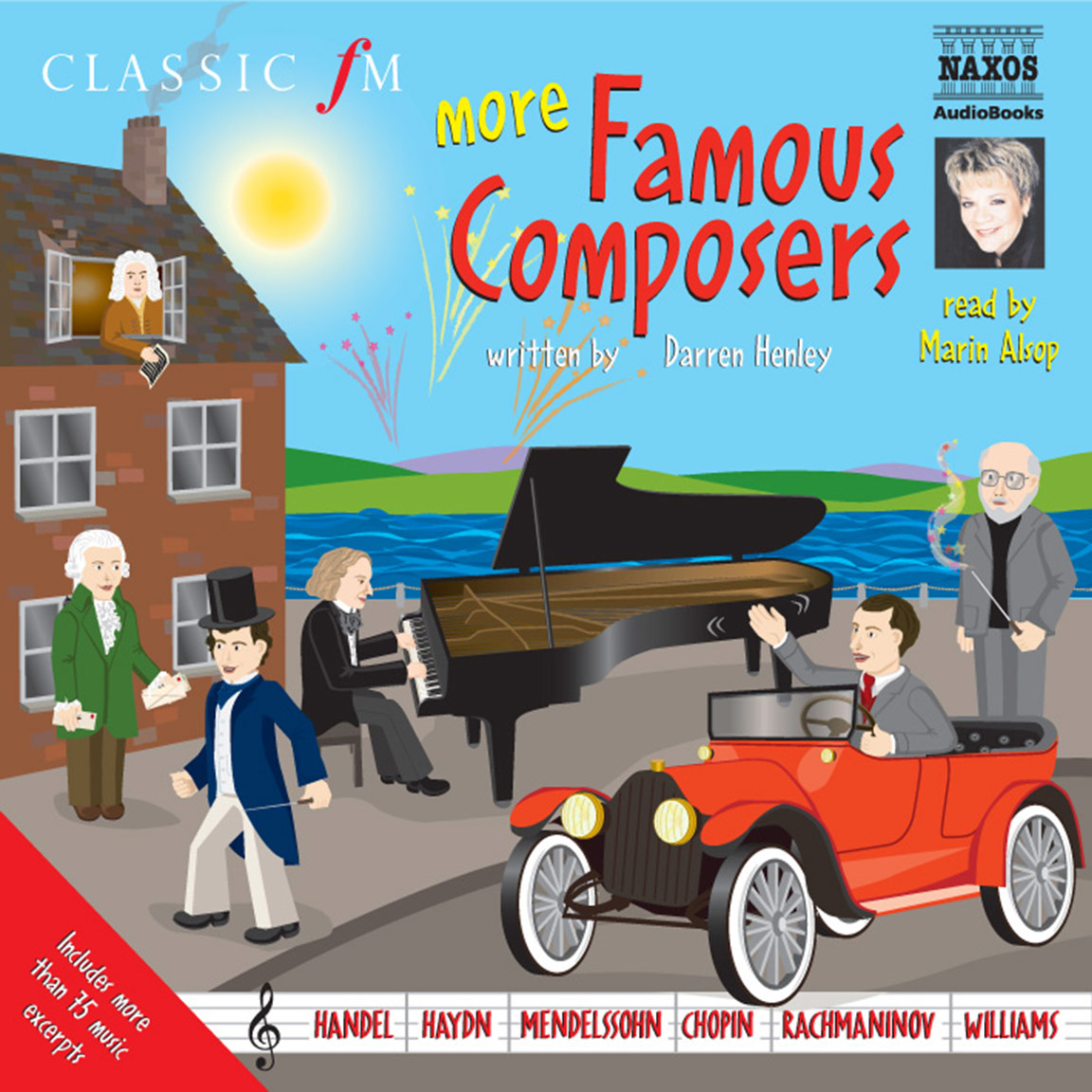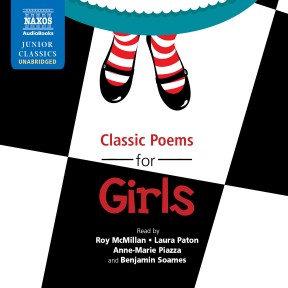
Audio Sample
Various
Classic Poems for Girls
Read by Roy McMillan, Laura Paton, Anne-Marie Piazza & Benjamin Soames
unabridged
Classic Poems for Girls is a collection of over 25 funny, whimsical and moving poems for 5–10-year olds, designed to fuel the imagination. From the adventures of the Jumblies, who sail away in a sieve, to the sticky end of a girl named Matilda, to the courtship of a maiden who lived long ago in a kingdom by the sea, there’s a poem to suit any feeling or mood. Seasoned Naxos AudioBooks readers Roy McMillan, Laura Paton, Anne-Marie Piazza, and Benjamin Soames work their magic on the works of Edward Lear, Louisa May Alcott, Christina Rossetti and many more.
-
Running Time: 1 h 05 m
More product details
Digital ISBN: 978-1-84379-621-3 Cat. no.: NA0103 Download size: 16 MB Edited by: Sarah Butcher BISAC: JUV070000 Released: July 2012 -
Listen to this title at Audible.com↗Listen to this title at the Naxos Spoken Word Library↗
Due to copyright, this title is not currently available in your region.
You May Also Enjoy
Included in this title
- Lewis Carroll
- The Lobster Quadrille
- Lewis Carroll
- To the Looking-Glass World it was Alice that Said
- Lewis Carroll
- How doth the Little Crocodile
- Lewis Carroll
- The Owl and the Pussycat
- Edward Lear
- The Nutcrackers and the Sugar Tongs
- Edward Lear
- The Quangle Wangle’s Hat
- Edward Lear
- The Yonghy-Bonghy-Bo
- Edward Lear
- The Jumblies
- Sarah Catherine Martin
- The Comic Adventures of Old Mother Hubbard and her Dog
- Hilaire Belloc
- Matilda
- Anonymous
- A Guinea Pig Song
- Anonymous
- Two Little Kittens
- Laura Richards
- Eletelephony
- Robert Louis Stevenson
- A Good Play
- Louisa May Alcott
- The Rock and the Bubble
- Robert Louis Stevenson
- Bed in Summer
- Jane Taylor
- The Star
- Thomas Hardy
- Weathers
- Henry Wadsworth Longfellow
- There was a Little Girl
- Mary Howitt
- The Spider and the Fly
- Oliver Herford
- A Tragedy in Rhyme
- Christina Rossetti
- A Rose has Thorns as well as Honey
- Christina Rossetti
- A Birthday
- Christina Rossetti
- Flint
- William Wordsworth
- Daffodils
- John Keats
- To Mrs Reynold’s Cat
- John Keats
- Old Meg
- Emily Dickinson
- A Light Exists in Spring
- William Blake
- The Tyger
- Edgar Allan Poe
- Annabel Lee
- Christopher Marlowe
- The Passionate Shepherd to His Love
- Alfred Lord Tennyson
- The Lady of Shalott
- Robert Burns
- A Red Red Rose
Reviews
From the nonsense poems of Lewis Carroll and Edward Lear, through to the works of Robert Louis Stevenson, Henry Wadsworth Longfellow, Emily Dickinson, Alfred Lord Tennyson, Christina Rossetti, and more, familiar and classic poems are ably performed by Roy McMillan, Laura Paton, Anne-Marie Piazza, and Benjamin Soames. There are poems about guinea pigs, kittens, and tigers, and others about lost love and of tragedy. Classical musical interludes, which are identified and credited in the CD insert, separate poems every few performances, often segueing into poems of a different type; otherwise the magic is all in the reading and the cadence of these rhyming tales. Especially entertaining is Anne-Marie Piazza’s performance of The Rock and the Bubble. All readers perform the poetry dramatically and expressively; occasional British and Scottish accents make the works more elegant. While some of the poems may be familiar as nursery rhymes (Old Mother Hubbard, The Owl and the Pussycat), others are certainly more mature (Birthday by Christina Rossetti, Annabel Lee by Edgar Allan Poe, The Passionate Shepherd to His Love by Christopher Marlowe). The accompanying booklet lists the poems and authors and introduces some of the classic pieces and the performers. Why these particular poems were selected for girls is not explained. Listeners will want to replay this CD again and again.
MaryAnn Karre, West Middle School, Binghamton, New York
As an introduction to classic poetry, this audiobook is simply delightful. It starts off with memorable children’s rhymes, including works by Lewis Carroll, Edward Lear, and Louisa May Alcott. As the listener moves through the collection, the poetry grows in sophistication with poems by John Keats, Christina Rossetti, and William Wordsworth. Short clips of classical music provide pleasant transitions between segments. The cast members take turns reading the various poems, and all of them deliver the works with close attention to cadence and elocution. They read with enthusiasm, often bringing in vocal characterisations when appropriate. An excellent choice for children, this production provides a tasteful selection of poetry classics.
D.M.W., AudioFile
Booklet Notes
A good poem is a wonderful thing. Like a favourite story, it can take you to new places, fuel your imagination, make you think and make you laugh. Whether short or long, straightforward or nonsensical, rhyming or unstructured, a poem can affect you in many different ways.
Poetry is a form of art, a very old form of art, in fact. Many people believe that the first poems were spoken aloud (‘recited’) or sung. They were used as parts of religious ceremonies, to bring luck, and to keep a record of important historical events.
On this recording is a selection of classic poems, all of which have been read for many years – centuries even – and are still enjoyed today. Hopefully you’ll like them too. They cover many different subjects, from the daring escape of a nutcracker and a pair of sugar-tongs, to a lost bride, to a medieval curse. Listen to the rhythm of the poems and where the beats are placed: this is why poetry is best read aloud. A great reader brings the words to life, and can inspire you to consider the poem in a different light.
It’s fun to imagine these poets reading their own words aloud as they wrote, trying to make sure they used language that would entertain, make you sad, surprised – any feeling you can think of. When the right words are used in the right combination, the effects can be magical.
Two poets who really knew how to combine words to fantastic effect were Lewis Carroll (1832–1898) and Edward Lear (1812–1888). They were both writing in the nineteenth century, and both wrote nonsense verse. If you love the sound of made-up words and funny phrases (perhaps you’re a fan of Alice in Wonderland), the chances are that you’ll like The Lobster Quadrille (Lewis Carroll) and The Nutcracker and the Sugar-Tongs (Edward Lear). Lewis Carroll and Edward Lear liked to imagine how animals and objects would behave if they could talk, laugh and argue, like we do. Here is the fifth verse of The Nutcracker and the Sugar-Tongs:
The Frying-pan said, ‘It’s an awful delusion!’
The Tea-kettle hissed and grew black in the face;
And they all rushed downstairs in the wildest confusion,
To see the great Nutcracker-Sugar-tong race.
And out of the stable, with screamings and laughter,
(Their ponies were cream-coloured, speckled with brown,)
The Nutcrackers first, and the Sugar-tongs after,
Rode all round the yard, and then all round the town.
These eight lines are a great example of how the pace of a poem can fit together really well with the story it’s telling. Here, we’re galloping along, carried by clever, quick rhymes, just before the nutcracker and the sugar-tongs quickly jump onto two ponies and ride off into the distance!
Another poem in which the poet brings unusual objects to life is The Rock and the Bubble, by Louisa May Alcott (1832–1888), the American writer best known for Little Women. Here, a headstrong bubble refuses to move out of the way of a great rock. You can probably guess what’s going to happen! It’s a poem with a moral: stubbornness doesn’t help you in the end. But more interesting than the moral is the way that the poet manages to craft a really convincing conversation within the constraints of the rhyme scheme.
This rhyme scheme is quite traditional: the second and fourth lines of each verse rhyme, as in The Nutcracker and the Sugar-tongs. In The Rock and the Bubble though, each verse is just four lines long, so you might think that the conversation between the rock and the bubble wouldn’t flow very well with so many breaks. But by keeping the rhymes simple and clear, Alcott makes the conversation seem natural:
‘Now, make way, make way;
For the waves are strong,
And their rippling feet
Bear me fast along.’
But the great rock stood
Straight up in the sea:
It looked gravely down,
And said pleasantly –
‘Little friend, you must
Go some other way;
For I have not stirred
This many a long day.’
Many of the poems in this collection call to mind beautiful images. Christina Rossetti (1830–1894), the nineteenth-century poet who wrote a lot of romantic poetry (as well as the poem In the Bleak Midwinter, on which the famous Christmas carol is based), was inspired by the natural world around her. This comes across in many of her poems, including A Rose has Thorns as well as Honey. From the title, you can tell that there’s a deeper meaning to the poem. A rose is beautiful, but it also has a deadly side. And the names of certain flowers can make you feel differently about them
as well:
A wind-flower suggests a sigh;
Love-lies-bleeding makes me sad;
And poppy-juice would drive me mad
In the end, it is holly, ‘bold and jolly’, that brings the poet happiness. Perhaps it’s because holly has nothing to hide.
Just as you might be inspired to write a poem after listening to this recording, all the poets here have been inspired by other writers who were producing works long before them. Fairy-tales, gothic literature (writing which often focused on horror, romance and fancy), mythology – all have provided inspiration. In this way, poetry enables some of the most amazing stories of the past to live on and be enjoyed by us, our children, and even our children’s children.
The Lady of Shalott by Alfred Lord Tennyson (1809–1892), is the penultimate poem in this collection. It was inspired by the medieval legend of Elaine of Astolat, a woman who fell in love with Lancelot, one of the Knights of the Round Table. In the poem, the lady of Shalott has been put under a curse that means she must stay locked in a tower and never look out of the window at the outside world. She can only look in a mirror. However, in the thirteenth verse:
Out flew the web and floated wide;
The mirror crack’d from side to side;
‘The curse is come upon me,’ cried
The Lady of Shalott.
She has seen Lancelot in her mirror, looked out of the window to find him, and must now die. It’s a beautiful poem, and it inspired John William Waterhouse’s painting, also named The Lady of Shalott. This hangs in the Tate gallery in London. You could listen to the poem and then go to see the painting, or look it up!
At nineteen nine-line verses, The Lady of Shalott is the longest poem in this collection, but it’s worth listening to all the way through: like all the poems here, it’s been chosen for the way in which the poet uses language to such exciting effect. This really comes across when the poems are read aloud. I hope you agree when you’ve heard this recording!
Notes by Frances Taffinder
